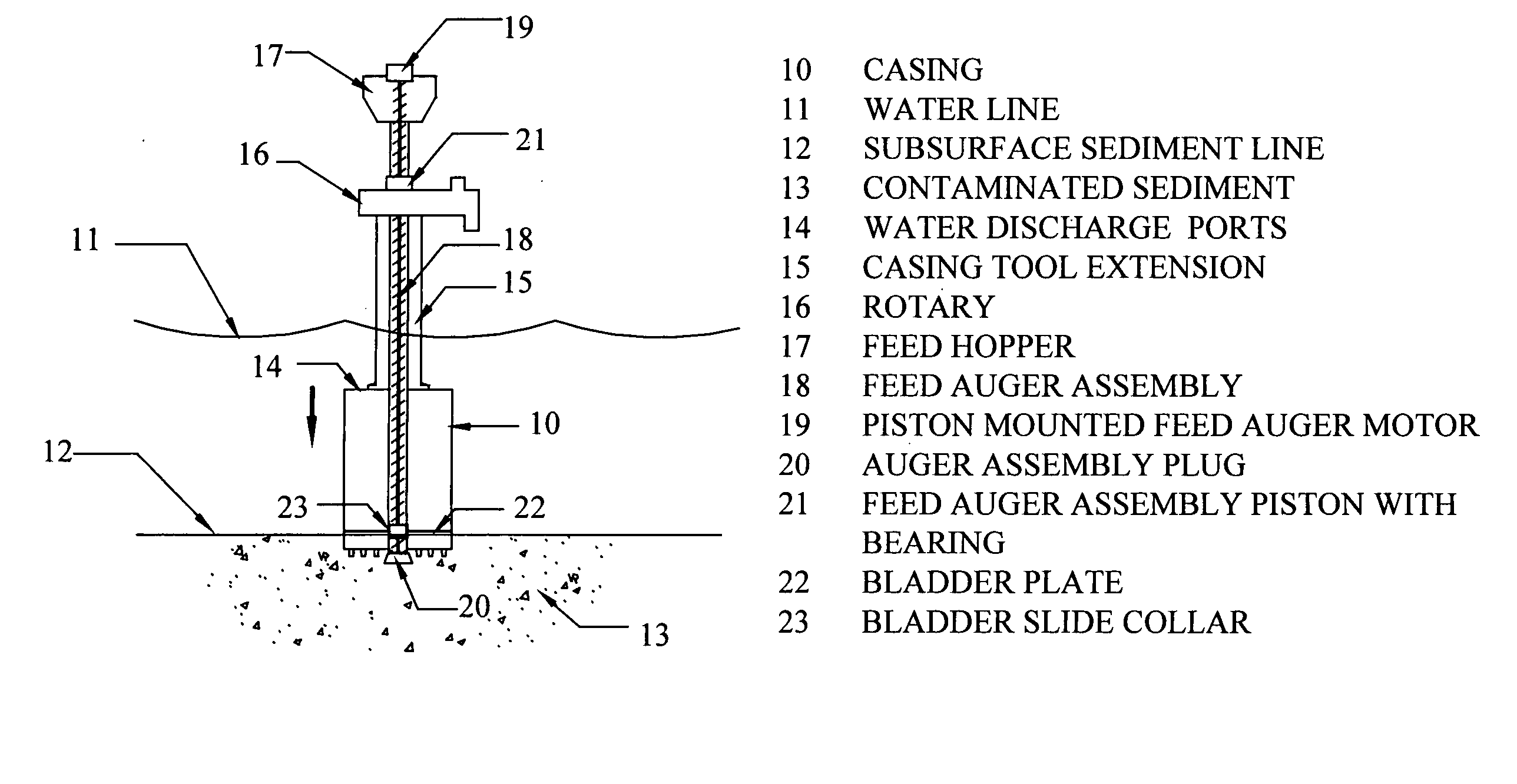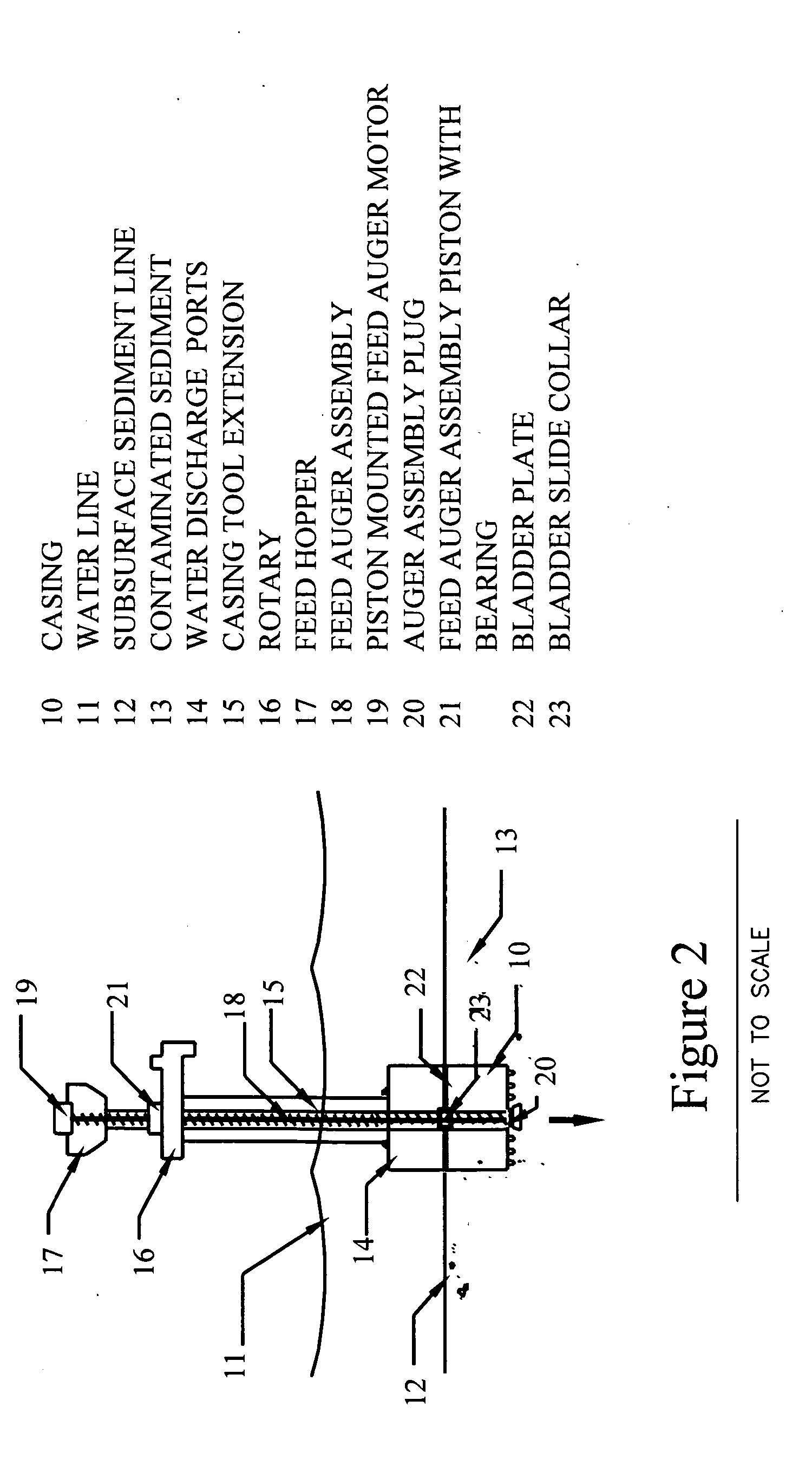Rotating containment tool for contaminated sediment remediation in an aqueous environment
a technology of contaminated sediment and containment tool, which is applied in the field of tools for remediation of contaminated sediment in an aqueous environment, can solve the problems of affecting the overall effectiveness and efficiency of each active management strategy, and affecting the overall effectiveness and efficiency of the respective approach. , to achieve the effect of preventing the release of contaminants and reducing the instability of the wall
- Summary
- Abstract
- Description
- Claims
- Application Information
AI Technical Summary
Benefits of technology
Problems solved by technology
Method used
Image
Examples
Embodiment Construction
[0057]FIG. 1 depicts the rotating containment tool in an excavation mode of operation, where the casing 10 has descended below the water line 11 and has just penetrated the subsurface sediment line 12 to remove contaminated sediments 13. The casing 10 is equipped with pressure water discharge ports 14 at the top that provide the means to relieve internal pressure when sediment is forced into the housing.
[0058] The casing 10 is connected by means of a casing tool extension 15 to a rotary 16, which is driven by a rotary drilling machine (not shown) that rotates the casing tool extension 15 and the casing 10.
[0059] Extending from the bottom of the casing 10, up through the feed hopper 17, the inventors have incorporated a feed auger assembly 18. The feed auger assembly 18 houses an auger inside that delivers backfill or capping material to the excavated hole. The feed auger assembly 18 is housed inside the containment tool extension 15 from the top of casing 10 to the rotary 16. The ...
PUM
 Login to View More
Login to View More Abstract
Description
Claims
Application Information
 Login to View More
Login to View More - R&D
- Intellectual Property
- Life Sciences
- Materials
- Tech Scout
- Unparalleled Data Quality
- Higher Quality Content
- 60% Fewer Hallucinations
Browse by: Latest US Patents, China's latest patents, Technical Efficacy Thesaurus, Application Domain, Technology Topic, Popular Technical Reports.
© 2025 PatSnap. All rights reserved.Legal|Privacy policy|Modern Slavery Act Transparency Statement|Sitemap|About US| Contact US: help@patsnap.com



